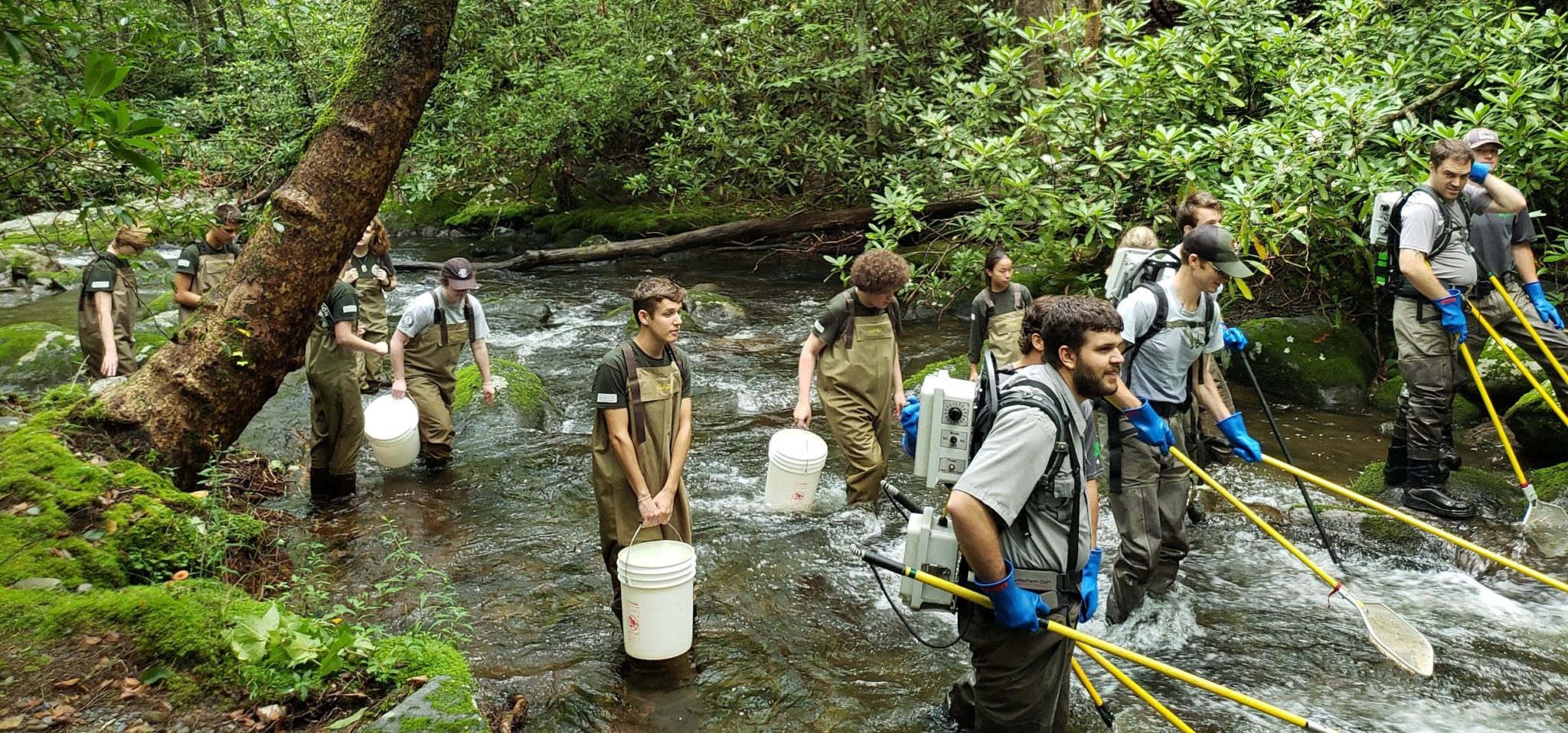Working with the GSMNP Fisheries Division was one of the many learning experiences for the high school students who were GSMNP summer interns. In this guest blog post, Hunter Carr shares what was involved in conducting a fish survey of the Middle Prong of the Little River.
by Hunter Carr
Seymour High School
Seymour, Tennessee
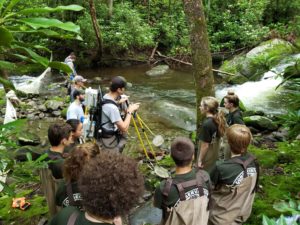
The GSMNP high school interns spent two days with the park’s fisheries crews to monitor fish populations in the Middle Prong area of Tremont.
Their teams were led by fisheries biologist, Caleb Abramson.
Setting up nets
To monitor the fish populations, we first had to block off a section of the stream to assure that no fish entered or exited the part of the stream we were in. We then made three passes from one end of the section to the other.
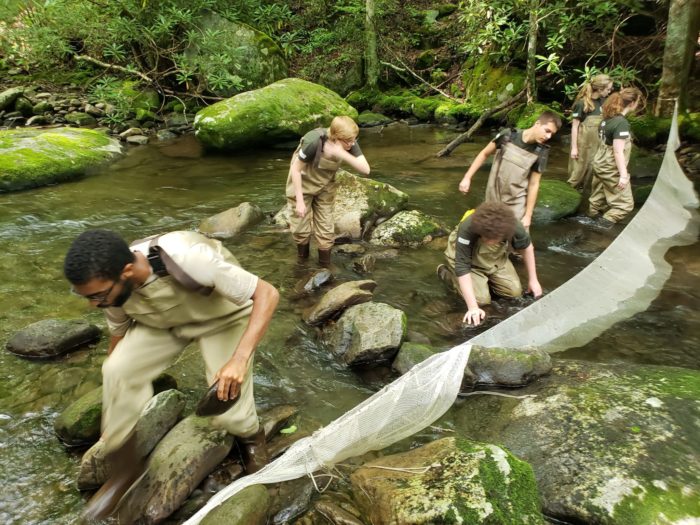
Electrofishing
During each pass, the fisheries crews used special backpacks that emitted an electrical current to momentarily stun the fish.
They would then catch the fish in nets and put them in buckets that we carried to the end of each section. (See the photo at the top of the post.)
Taking measurements
After each pass, we identified, measured, and weighed each fish that we caught.
We recorded all of this data for the fisheries crews. We also collected data about the stream, including width, depth, and flow rate. After measuring the fish from all three passes, we released the fish back into the stream.
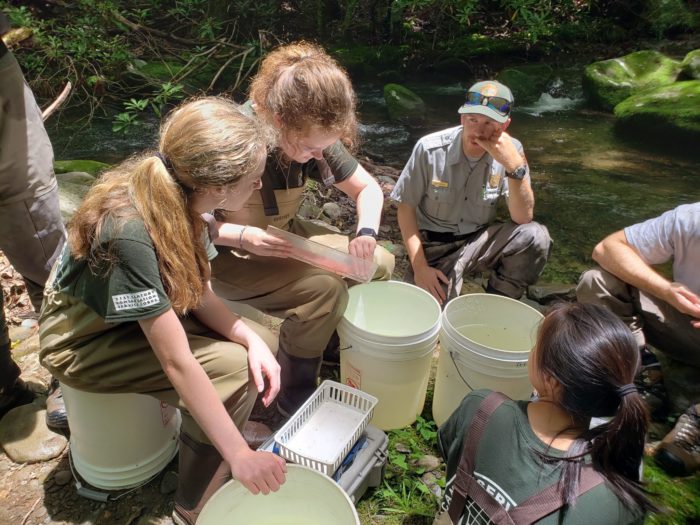

Fun Fish Facts
- Brook trout are the only native species of trout in the national park. Rainbow trout and brown trout were introduced.
- Many fish drastically change color during their breeding seasons.
- The fisheries crews do most of their field work in the summer season and then input their data in the winter.
Reflection
Spending two days with fisheries was very eye-opening for me.
I knew that people worked in and around the streams in the park, but I had no clue that they walked up and down the streams, catching and measuring all the fish that they found.
This experience has given me a greater appreciation for the people who do this extremely hard work.
I could definitely see myself working for the fisheries crew one day!
****
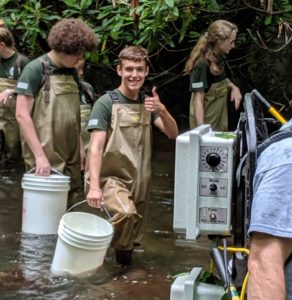
For six weeks, the interns worked with rangers, Teachers in the Parks and volunteers on projects in the park to learn more about GSMNP and to get a feel of what being a park ranger is like.
Sixteen students from North Carolina and Tennessee participated in the program this summer.
Friends of the Smokies has helped support the GSMNP High School Internship Program for 17 years, initially providing the salaries for the interns and then helping fund the program staff salaries. The program is funded in part by the American Conservation Experience (ACE).
Several of this summer’s interns have written guest posts and compiled photos of their experiences, which will be published on the FOTS blog. All the photos in this post were taken by the Tennessee interns.
A special thanks to Ranger Jessica Snow, who coordinated the Tennessee interns, and Ranger Erin Lamm, who coordinated the North Carolina interns, for their assistance with the interns’ blog posts.
You can support the GSMNP high school summer internship program or support other education programs that FOTS funds, including Teachers in Parks, Parks as Classrooms, the Kathryn McNeill Endowment that funds an education specialist, and the Park Liaison program at the Cherokee School.
